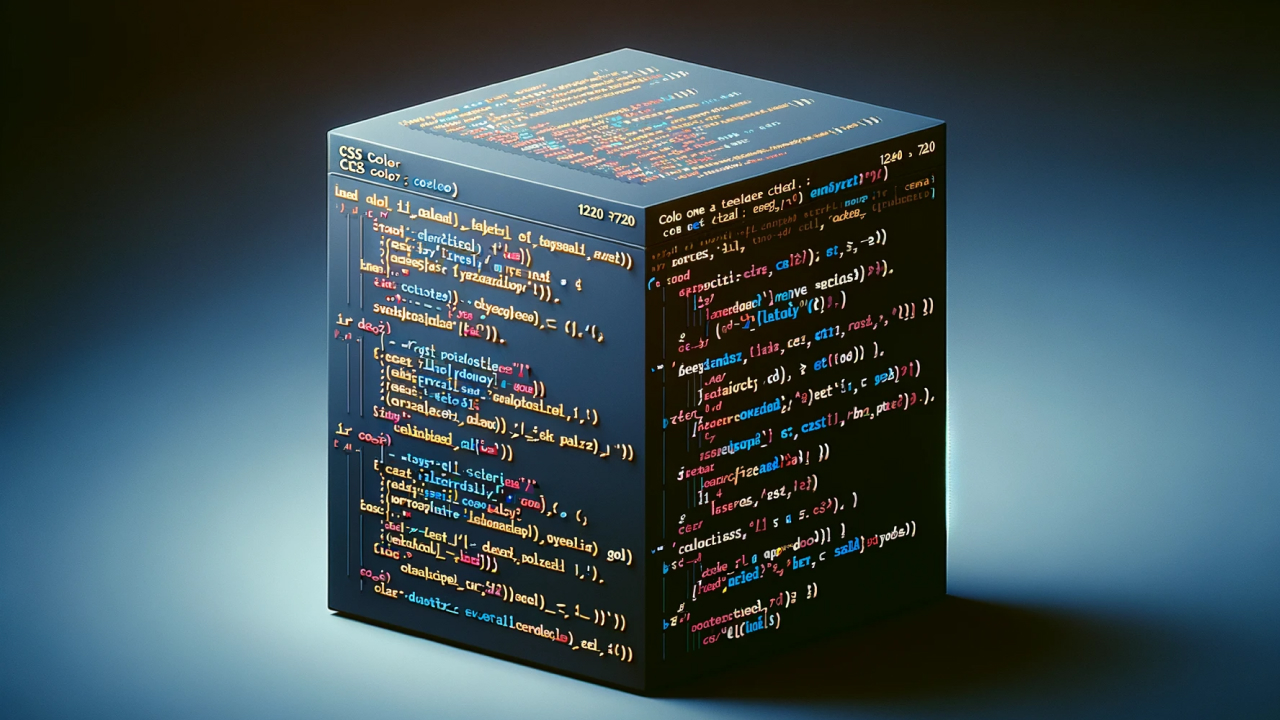Hitting the spot with software development outsourcing is not just about identifying the right partner but also about finding the best contractual framework. Typically your choices might narrow down to time and materials vs. fixed price. Each type of contract has pros and cons so there’s no one-size-fits-all answer. Instead the choice should reflect your project requirements goals and resources.
To aid your decision-making we explore these two pricing models and guide you in finding the right fit for your project.
Time and Materials (T&M): An Adaptive Approach
The Time and Materials model, abbreviated T&M, is a contract type wherein clients pay based on actual work hours, materials, or other expenses. This approach is popular in projects where the scope isn't clear or flexibility is a priority. It allows for project trajectory modifications based on evolving requirements or unforeseen challenges.
How does a time and material contract work in practice?
In a T&M contract, clients pay based on the actual hours developers put in the project and any direct costs. Initially, both parties agree on an hourly or daily rate for the work. Developers keep track of their time as the project progresses and then bill the client periodically, often weekly or monthly. The bill will include detailed breakdowns of hours spent on various tasks and any additional costs like software licenses or third-party services.
The standout feature of T&M is its adaptability. The model can flexibly adjust as project requirements shift. This means the project can incorporate new features or pivot away from outdated ones without significant disruption.
In the Time and Materials model, the client's role goes beyond funding and oversight. Their active involvement, through consistent feedback and dialogue with developers, directly influences the project's direction. This interaction leads to a more tailored product that does not only meet the initial brief but can adapt to ongoing needs or changes.
Advantages and disadvantages of Time and Material Pricing
-
Advantages:
- Flexibility. T&M allows for project scope changes and requirements without extensive contract renegotiations.
- Transparency. Such contracts provide a detailed account of work hours and other expenses which promotes trust between both parties.
- Adaptability. T&M is great for situations where the exact requirements are not defined at the start or might evolve.
-
Cons:
- Budget uncertainty. The final cost can be unpredictable, which might be challenging for projects with tight financial constraints.
- Requires monitoring. Clients need to keep the project's progress in check so that the hours billed correctly reflect the work completed.
- Uncertain deadlines. End dates are impossible to predict and can shift according to the project's pace and any changes in scope.
When should you choose a T&M contract?
A T&M contract is a workable option for many clients, but it's particularly suited to specific scenarios. Here are some common situations in which choosing a T&M contact could be a smart decision:
- The project scope is unclear or evolving. If you anticipate regular changes or adjustments, T&M offers the necessary flexibility.
- You prioritize quality over speed. This type of contract allows for a more detail-oriented and potentially higher-quality result as contractors don't feel forced to meet aggressive fixed deadlines.
- The project is R&D or exploratory, where outcomes might be unpredictable.
- There's trust and a strong working relationship between the client and developer, and the open-ended nature of the contract won't be misused.
Hitting the Spot with Software Development Outsourcing
Hitting the spot with software development outsourcing is not just about identifying the right partner but also about finding the best contractual framework. Typically, your choices might narrow down to time and materials vs. fixed price. Each type of contract has pros and cons, so there’s no one-size-fits-all answer. Instead, the choice should reflect your project requirements, goals, and resources.
To aid your decision-making, we explore these two pricing models and guide you in finding the right fit for your project.
Time and Materials (T&M): An Adaptive Approach
The Time and Materials model, abbreviated T&M, is a contract type wherein clients pay based on actual work hours, materials, or other expenses. This approach is popular in projects where the scope isn't clear or flexibility is a priority. It allows for project trajectory modifications based on evolving requirements or unforeseen challenges.
How does a time and material contract work in practice?
In a T&M contract, clients pay based on the actual hours developers put in the project and any direct costs. Initially, both parties agree on an hourly or daily rate for the work. Developers keep track of their time as the project progresses and then bill the client periodically, often weekly or monthly. The bill will include detailed breakdowns of hours spent on various tasks and any additional costs like software licenses or third-party services.
The standout feature of T&M is its adaptability. The model can flexibly adjust as project requirements shift. This means the project can incorporate new features or pivot away from outdated ones without significant disruption.
In the Time and Materials model, the client's role goes beyond funding and oversight. Their active involvement, through consistent feedback and dialogue with developers, directly influences the project's direction. This interaction leads to a more tailored product that does not only meet the initial brief but can adapt to ongoing needs or changes.
Advantages and Disadvantages of Time and Material Pricing
-
Advantages:
- Flexibility. T&M allows for project scope changes and requirements without extensive contract renegotiations.
- Transparency. Such contracts provide a detailed account of work hours and other expenses, which promotes trust between both parties.
- Adaptability. T&M is great for situations where the exact requirements are not defined at the start or might evolve.
-
Cons:
- Budget uncertainty. The final cost can be unpredictable, which might be challenging for projects with tight financial constraints.
- Requires monitoring. Clients need to keep the project's progress in check so that the hours billed correctly reflect the work completed.
- Uncertain deadlines. End dates are impossible to predict and can shift according to the project's pace and any changes in scope.
When Should You Choose a T&M Contract?
A T&M contract is a workable option for many clients, but it's particularly suited to specific scenarios. Here are some common situations in which choosing a T&M contact could be a smart decision:
- The project scope is unclear or evolving. If you anticipate regular changes or adjustments, T&M offers the necessary flexibility.
- You prioritize quality over speed. This type of contract allows for a more detail-oriented and potentially higher-quality result as contractors don't feel forced to meet aggressive fixed deadlines.
- The project is R&D or exploratory, where outcomes might be unpredictable.
- There's trust and a strong working relationship between the client and developer, and the open-ended nature of the contract won't be misused.
Fixed Fee: Clarity from the Start
Fixed Fee is another major pricing model in software development. When comparing firm Fixed Price vs Time and Materials, the former takes a more conservative approach. All work aspects, including scope, timeline, and cost, are determined and agreed upon before initiating the project.
How does fixed price work in practice?
In the Fixed Price model, everything revolves around a predefined agreement. Before any development starts, a comprehensive plan details the project's scope, deadlines, and total cost. This deep dive into requirements sets clear expectations from the start. The client knows what to expect, when to expect it, and how much it will dent their budget. For the developer, it’s a blueprint that shows them where to go without second-guessing.
Everything relies on accuracy and precision. Any changes or modifications after the contract's approval might create issues – they could either cost extra or require more time to implement. This is why detailed planning and documentation are crucial for this model.
Pros and Cons of the Fixed Price Agreement
-
Pros:
- Budget predictability. The client knows the cost upfront, eliminating surprises.
- Defined scope. The project's parameters are set from the start, providing a clear roadmap.
- Minimal oversight. Clients don't need to monitor hourly developments as closely.
-
Cons:
- Limited flexibility. Any changes to the project can require contract renegotiation.
- Potential for scope creep. Unforeseen challenges may arise, impacting the outcome if not addressed.
- Pressure on developers. The fixed budget can lead to corner-cutting if the initial estimate is too low.
When Can You Safely Choose a Fixed-Price Contract?
The decision to select a fixed-price contract largely depends on the nature of your project and its requirements. Here are some situations where this contract type proves beneficial:
- The project has defined requirements and objectives from the outset.
- The project is short-term, with a scope that is unlikely to evolve.
- There's a desire for minimal day-to-day oversight.
- The client has a strict budget without room for unexpected increases.
- Past projects or extensive research offers a reliable basis for accurate estimates.
- The relationship between client and developer is newer, and there's a preference for clear financial boundaries.
Factors Influencing the Choice of Time and Materials vs Fixed Fee
Now, there is a decision to be made: choosing between Fixed Price vs T&M. The nature of a project, its complexity, and how well-defined its scope is are the main factors helping you pick one model over the other. Below, we outline the factors that commonly influence this choice.
Factors Influencing the Choice of Time and Materials vs Fixed Fee
Now, there is a decision to be made: choosing between Fixed Price vs T&M. The nature of a project, its complexity, and how well-defined its scope is are the main factors helping you pick one model over the other. Below, we outline the factors that commonly influence this choice.
Project complexity
Predicting every requirement upfront can be challenging for intricate projects with many variables or unknowns. These might benefit from the flexibility of a Time and Materials model, where evolving needs can be addressed in real-time.
Conversely, projects with a more straightforward and well-defined scope, where tasks and outcomes are predictable, might better fit a fixed-price contract. With this model, the goals and milestones are set beforehand, which makes it easy to manage and track the project's progress.
Budget
When considering Time and Materials vs Fixed Fee, budget often dictates many decisions. A Fixed Fee contract is ideal for those projects with limited budgets and strict deadlines. It offers predictability by setting a cap on costs, thereby eliminating any surprises when the invoice comes. It allows you to have absolute clarity on what your project will cost.
On the other hand, when budgets possess some degree of flexibility, a Time and Materials model might be a better fit. Sometimes, it can even be more cost-effective if the work is completed in less time than initially estimated.
Stakeholder Involvement
In a Time and Materials model, client involvement is substantial and ongoing. Clients have direct input into the project's direction as they provide constant feedback and participate in decision-making processes. This model suits those who want close control over the project's development.
With a Fixed Fee contract, the client's involvement is often less intense. Once the project's scope, objectives and milestones have been agreed upon, the development team works towards these predetermined goals. It is ideal for projects with clear, well-articulated objectives and where clients prefer a more hands-off approach.
Duration and Phases
A Time and Materials model might be more appropriate for long-term projects spanning months or years. The reason is the longer the project, the more chances there are for changes – whether due to evolving stakeholder preferences, market dynamics, technological advances, or other unforeseen factors.
Meanwhile, a Fixed Fee contract typically matches shorter projects with well-scoped phases. In these cases, stringent timeframes and clear outputs can be identified in advance. Also, if a project is broken down into distinct phases or milestones, it's easier to set fixed prices for each.
Speed
With a Fixed Price contract, the planning stage at the start may take longer because all project details need agreement before work begins. This means it can delay initial progress, but once work starts, movement toward an established goal is steady. The risk lies in any technical difficulties or needed adjustments which could slow things down.
In contrast, the Time and Materials model allows for a quicker start as the planning phase isn't as extensive. The team can start working immediately and adjust along the way, which is suitable for projects with an aggressive timeline.
Reliability
A fixed price model gives certainty on costs and timelines. It's also a safe option when starting to work with new collaborators, as clear expectations are set from the beginning.
The Time and Material model is less predictable and heavily relies on trust established between the development team and the client. It suits those who have established a working relationship with their team and can openly communicate about changing requirements or project hurdles.
Resource Availability and Expertise
Developers might prefer a Time and Materials contract if a project demands specialized skills in high demand. The reason is simple: specialized skills can be harder to estimate regarding time requirements, especially if the project involves novel or cutting-edge technology.
Conversely, a Fixed Fee model can be more feasible for situations where the required skills are well-understood and resources are readily available. With a clear understanding of what's involved and how long tasks should take, developers can provide accurate estimates.
Hybrid Models: Integrating T&M and Fixed Fee
In software development, no two projects are exactly alike. Different challenges and requirements often mean that a one-size-fits-all approach to choosing between Fixed Price vs Time and Materials isn't practical. Many companies have turned to hybrid models that combine aspects of both Time and Materials and Fixed Fee contracts.
A hybrid model breaks down a project into distinct parts. Some components, which have well-defined requirements, adopt the Fixed Fee approach. For these sections, clients and developers agree on a price, which provides cost predictability.
Then, the Time and Materials approach is used for project parts where the scope is fuzzy or flexibility is needed. This allows the project to adapt and evolve as necessary without renegotiating the entire contract whenever a change arises.
Advantages of a Hybrid model include:
- Flexibility. Allows room for changes in uncertain parts of a project.
- Cost predictability. Provides a capped price for certain components.
- Optimal resource utilization. Developers can allocate resources efficiently and apply fixed prices for familiar tasks and T&M for novel parts.
- Risk management. Reduces the overall project risk by offering a balanced approach.
To illustrate, let's consider an example. A company hires a web development agency to revamp its existing e-commerce website. A fixed price can be set for features like updating the user interface or migrating data, which are straightforward and predictable. The Time and Materials approach would be more suitable for integrating a new AI recommendation engine, whose challenges and requirements might evolve.
Conclusion
Choosing the right pricing model for software development is a balance of predictability, flexibility, and risk management. While Fixed Fee offers clarity on costs, it might limit adaptability. On the other hand, Time and Materials provide flexibility but can be unpredictable in costs. The Hybrid Model bridges these gaps and offers a viable solution for projects with components that have fixed requirements but also need room to evolve.



